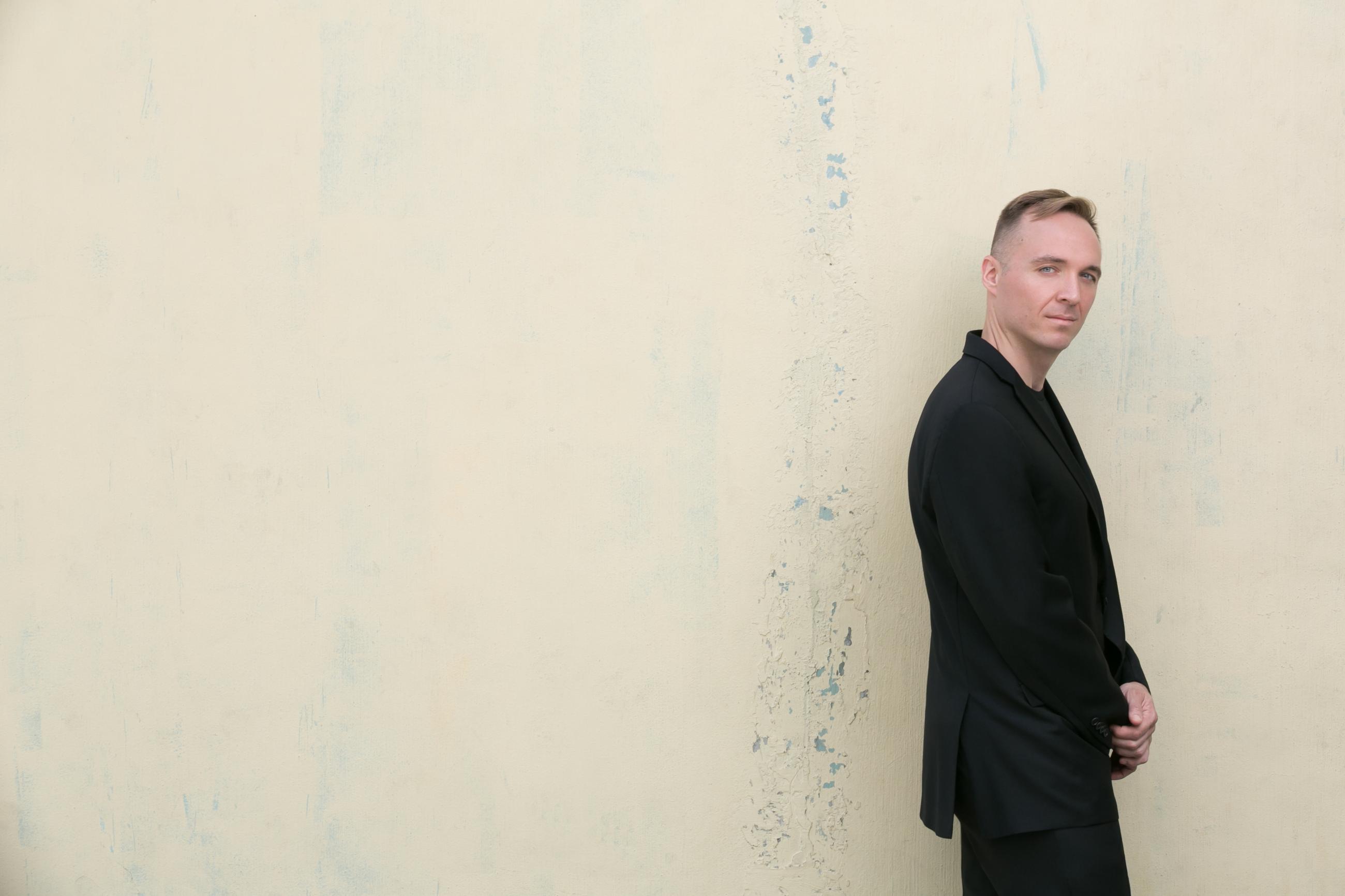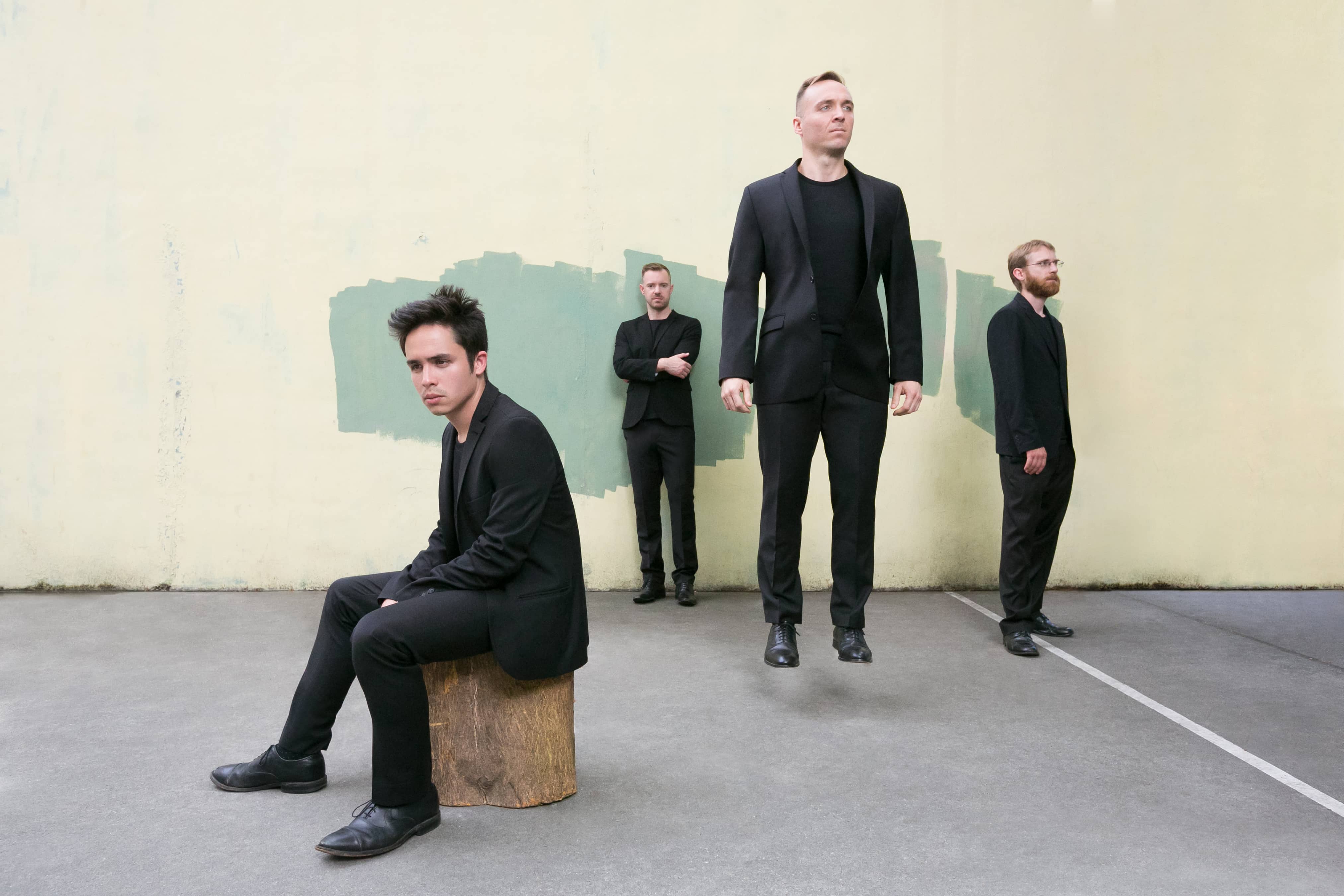
By Landon Hegedus, UChicago Presents
In conversation Austin Wulliman, violinist with JACK Quartet:
UChicago Presents: How did you first become familiar with the music of Georg Friedrich Haas?
Austin Wulliman: I first became familiar with Haas’s music many years ago in Chicago through a few other composers and performers who were just excited about sharing it with others. And the piece in vain was the first one that people kind of were sharing around. That ended up being the first piece by Haas that I performed with Ensemble Dal Niente several years ago. That piece is really incredible, and also involves darkness as an aspect of performance. There’s a section in the middle that’s performed in darkness, and then there’s some lighting cues as well in a later section, so it's a different concept around that. That piece originally had some like political origin, so it's really kind of a different experience with that, but it has the language of just intonation, which was something that not many people were yet exploring in the mainstream of contemporary music. So that piece was really an inroad for many people I know, at least around my peers at Northwestern, where I was at the time, who got interested in the harmonic series and just intonation as material for creating a new contemporary music language through Haas’s music at that time.
UCP: Haas Third Quartet was a staple of JACK's repertoire, even before the notion of the Ninth was ever introduced. That piece, as I understand, was the entry point into the quartet’s relationship with Haas. How did your relationship come about, and how might you characterize some of the differences between the Third and the Ninth?
AW: The Third Quartet was a staple of JACK’s repertoire for a while. They’ve performed it several times and worked with Haas on it a couple times. That piece has a really interesting combination of elements including these “game” elements that mean that you can go between sections in different orders and explore different material at different times. There’s a lot of instruction-based things, like chaining these overtone series in a way that’s described verbally, but then there's room for every performance to be really quite different, as far as how those rules are played out. It’s the same piece, but the music plays out differently, so it has the sense of improvisation to it within a highly structured musical environment. It also contains some Webern-like language, and at other times references Renaissance music that give it a night music quality, like being in a dream state.
Through performing the Third Quartet, JACK built a relationship with Haas. This was actually before I joined the quartet; I’ve been playing with them for about three years now. JACK has always had a really strong interest in just intonation and in that language. For instance, Chris – our other violinist – composes really interesting, almost experimental-level stuff that pushes the boundaries of what’s possible in that language, so we’ve been performing his music as part of that. So it's something we're super interested in – all four of us individually, and as a quartet – and that relationship with Haas has helped grow that interest.
Haas composed his Eighth Quartet for JACK in a different circumstance; I believe they premiered that in Basel, also before I was in the group. Then the idea came for another quartet in the dark, because they had continued performing the Third Quartet a lot, since it’s a concept I think presenters are really interested in. So the idea came up for another quartet in the dark, and Wien Modern commissioned it. So we premiered it there, in Vienna – actually during my first season in the Quartet, three years ago.
The difference between the Third Quartet and the Ninth is that this piece is more through-composed; a lot more of the music is fully notated, as you would expect. It's really smart, though, the way that it's structured; it's not like hocketing, fast music or something like that. There's lots of ensemble detail, but it’s the kind of thing you can do with your ears, and learn over time how to listen for someone else's bow motion to get the tempo, or things that are somewhat open-ended, but have them have a lot of details, for instance note lengths that aren't exactly defined, but we can then listen to each other for how to coordinate the change, or independent things within a period of time, where change comes later, and we listen for cues. It's all very carefully planned out how that works. Each section has a different quality to it: there's an overtone-chaining sequence; there are explorations of really high string harmonics; there is a game section to the pieces that is somewhat open ended, but all the materials are really precisely defined. The game aspect of it is really intriguing; I think that as an audience member, you can never know what exactly is going on, but you can tell there's a weird internal system unfolding, and it’s like, What's going on in this music? The piece does end with a really composed-out coda similar to most quartet music as you would expect it, but done in the darkness. So that’s one really big difference.
As far as the mood that it creates, I feel like it explores darkness in a different way. It feels to me like a more personal, spiritual darkness, rather than a nightscape, if that makes sense. You feel like you’ve traveled through some really interior places in experiencing this piece.
UCP: That’s really fascinating! I imagine that even though this piece is composed really idiomatically for being performed in the dark there are still a number of inherent technical challenges and considerations when performing under these conditions. What kinds of strategies did you deploy as a group to familiarize yourself with those rigors?
AW: It’s definitely hard just to play together without any visual cues. We use visual cues a lot as a quartet, obviously, as most quartets do on some level, so learning and defining clearly how people are executing certainly musical events in the piece is important. A lot of times, we rely on listening down to the cello for intonation, especially in something like this where, intonation is central to the harmonic language of the piece. So we’ll listen for Jay is playing certain things and follows his bow motion based on the sound of it. But also in rehearsal, we work it out so that we really can anticipate what kind of pacing, what type of crescendo or diminuendo it is that we're following together, and making sure that we really know, Okay, we're doing the actions in this part exactly like this, so that when I hear the first cue happened, I know how to go on next, and I can trust that our way of doing it is really consistent. It has to be very consistent, especially in some of the playful moments of musicianship that you can have; when you're looking at each other, it's easier to tell somebody to do something, because they kind of, you know, perk up. You see that happening, and you're like, Okay, somebody's bringing something to this. It’s a really different sensation to have that play out in the darkness.
The first time that we did it, I felt like it was very, very defined. It was an interesting and beautiful experience, but as we've done it more, and we’ve performed it many times now, there can be more of that playful freedom to it, which is amazing. It’s different feeling of that freedom of performance, that comes when you really know a work, that it sometimes feels like I’m being carried along by those plans that we have to kind of follow the voice leading a section. But then, also, as I've learned how to do some of these things with just my ears and not being able to see it all, there's a real sense of collectivity that can happen that's only from the ears that has – I don't even know if I can put it into words – just has a really incredible, resonant feeling within the body, because your sense of sight is out of the picture. You feel the vibrations of what's happening very intensely if very connected to what's going on. It’s a great experience.
UCP: Would you say that that experience is more pronounced in the game sections of the piece?
AW: You know, what's funny is that feeling comes – it's unexpected to me, too – but that feeling actually comes the most in the parts associated with regular meditation. Oddly, because it's like, the thing I'm used to feeling in a different way is now being done in another mode, where I can't use my eyes at all, which I think it internally reveal something to me. We do a lot of pieces where there are openly-scored stuff, so I'm very comfortable doing that with the quartet, and we have a lot of experience with it. So actually, those parts feel really at ease, and I can explore the darkness and try to get a sense for the space around me. One of the most amazing things about performing an absolute, complete pitch darkness, is that your sense of space becomes totally confounded. You can’t know what close or what’s far; even trying to echolocate doesn't really work, because if the hall is resonant, you start to kind of like lose a sense of where things are. Some of the sounds are really small, so you start to get up close and embedded in the tiny world of the quartet, so it really kind of blows up your sense of space. And so in the sections in the score where it's really open, I feel like I can let head up from having to be super locked-in with what someone else is doing, and then I have this chance to go, Wow, that is this space we’re exploring with sound right now, And oh, man, there's like all these people out there and listening to this and experiencing this. It’s cool to have those moments in the piece where, even while still focused on the music, you can zoom out and see it in the context of where it is and what's happening all around it – I love that.

